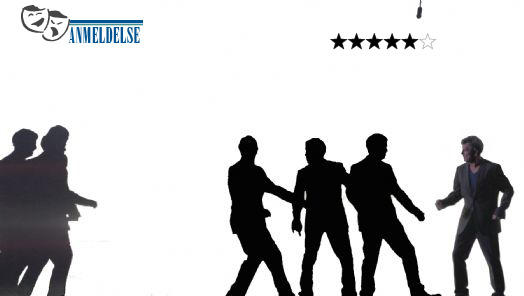
Review
Teater TT: Woopsy
Facts
Theatre TT: Woopsy
Text: Brian Joyce
Translation: Claus Senderowitz
Participants: Torkild Lindebjerg
Consultant: Hans Rønne
Age: 6-10 years
Duration: 40 minutes
Touring performance. Seen at the April Festival 2016 at Frederiksberg. Performed at Horsens Theatre Festival on 16-18 September (www.horsensteaterfestival.dk), www.teatertt.dk
A different refugee story
24 August 2016
The idyllic atmosphere is taken almost too far as Theatre TT wants to tell children between 6 and 8 about the tough destinies and hardships of refugees in a goodhearted and careful way.
Ever since 1985 and even earlier than that, Torkild Lindebjerg and his Theatre TT have contributed to Danish children's theatre. As an actor telling his owns simple tales, as an instructor of others' plays, and as a central figure in these circles for many years.
I have a lively recollection of "Freddie's radio theatre" where he cooperated with Claus Senderowitz as they gave their version of Snow White in a funny and untraditional way. Also this time, he has cooperated with Senderowitz – now as the translator of Brian Joyce's story about Woopsy, the boy who was born with a Woops, which got him his name.
The waiter's story
Torkild Lindebjerg is sitting at a small candle-lit table, set with a small plate with a biscuit and a glass of red wine, and a weeping fig next to him. Relaxed, friendly and safe. We are in a quiet restaurant – no demanding Michelin stars or challenging menu cards. An over-dimensioned adjustable lamp effectively secures the lighting.
Lindebjerg is a competent technician, and by means of simple, though exact gestures and facial expressions, he quickly makes us see the modest cafe and the tables and the people around him as well as the imaginary waiter coming to his table. He gets talking to the waiter, and this opens a door to an exciting story.
You see, the waiter, Woopsy as he is called, is from another country, far away, that he had to flee when he was quite little. The story is told to Lindebjerg, and he recounts it to us, full of details, and a refugee's fate unfolds.
About how Woopsy grew up in a wonderful country with Father, who was a waiter in the nightclub "The Freckle", and where Mother was a dancer – a belly dancer with a diamond in her navel. Life in the restaurant, the guests, the music, the waiters who were hurrying to and fro, Mother who was dancing, the applaud – all of this was part of little Woopsy's happy childhood.
Until everything fell into ruins. The country was thrown into war and devastation, the nightclub burned down, everything turned into ashes, and worst of all: Mother and Father disappeared, were killed, were gone.
Without his loving parents, abandoned and in despair, Woopsy understood that he had to flee from his beloved city, from the destroyed home, from death and chaos. Ten years old. Unaccompanied.
He brings along three things: Mother's diamond, Father's waiter's coat and a plate from the parents' restaurant, and he gets on a bus full of other refugees. The road is miserable, the bus is overfilled, the fear is tangible, but they are on their way to the border and safety in another country. After all, this creates a feeling of confidence and a careful smile between Woopsy and the girl sitting on the other side of the aisle, who is playing with a doll.
Confusion of languages
Life is hard in the new country, and it does not make it any easier that everybody is speaking another language. Lindebjerg manages to get a lot of fun out of this. When, for example, what sounds like "Screw your head off and put it in your pocket" means "come on in and shut the door", it becomes clear to even the youngest children how difficult it may be to get to a new place, not know anybody and not understand a sound.
But Woopsy is an enterprising person who works it out. He is going to need Father's waiter's coat, and that has to do with a nightclub and a restaurant called "The Tie and Rockets", and he is going to need Mother's diamond, and that has to do with the girl on the bus and her doll.
So, all ends well. Really well. A little too well, to be honest. But all the way through, the story carries an unmistaken stamp of being a friendly, harmless bedtime story. The ambition to tell the story so that even the 6- to 10-year-old children get an idea of what it means to be a refugee is all right, and Lindebjerg succeeds in a great many respects.
But the end lacks realism and credibility – though it ties a neat knot to the story.
But, then again, fairy-tales are good stories!
By: Janken Varden

